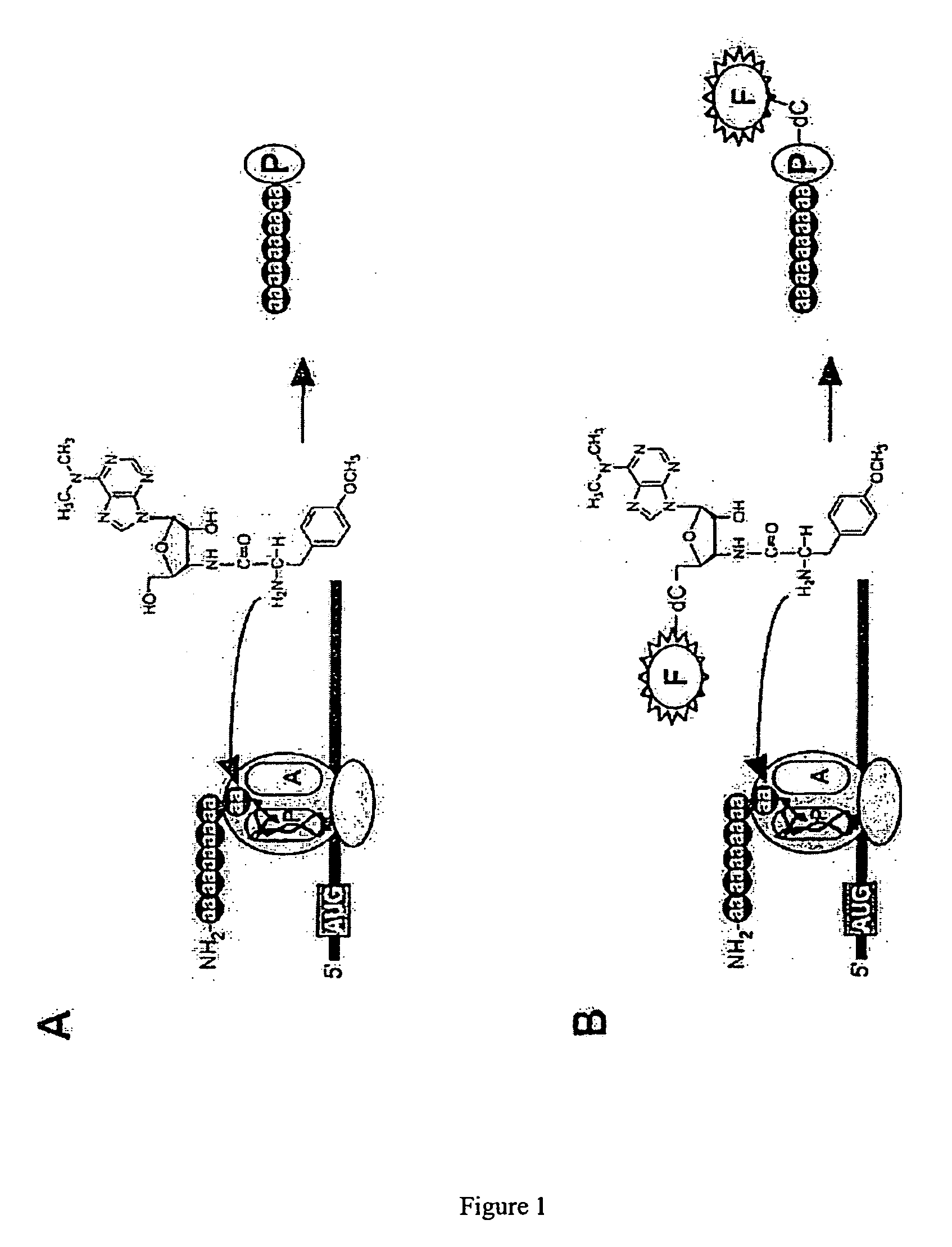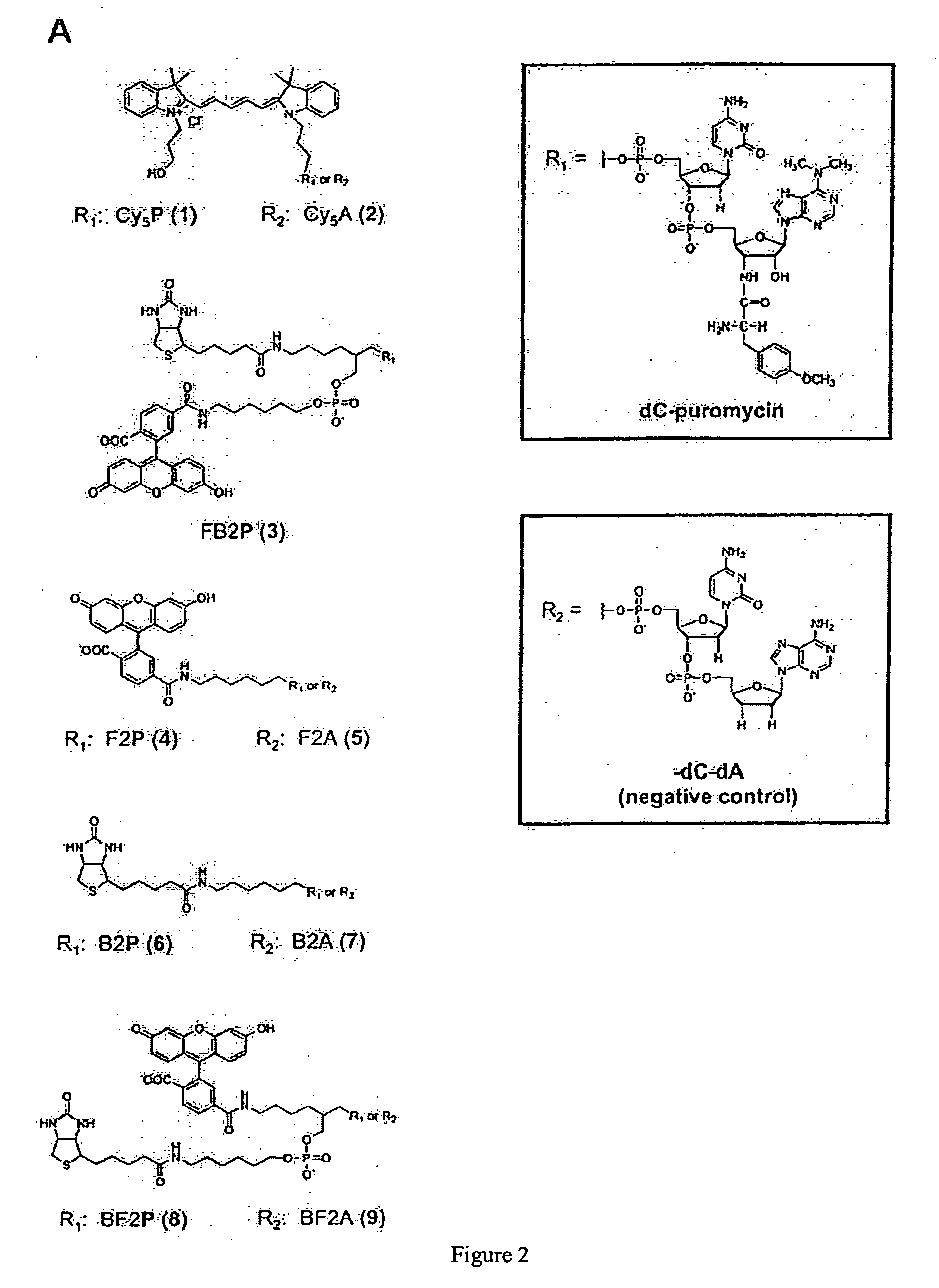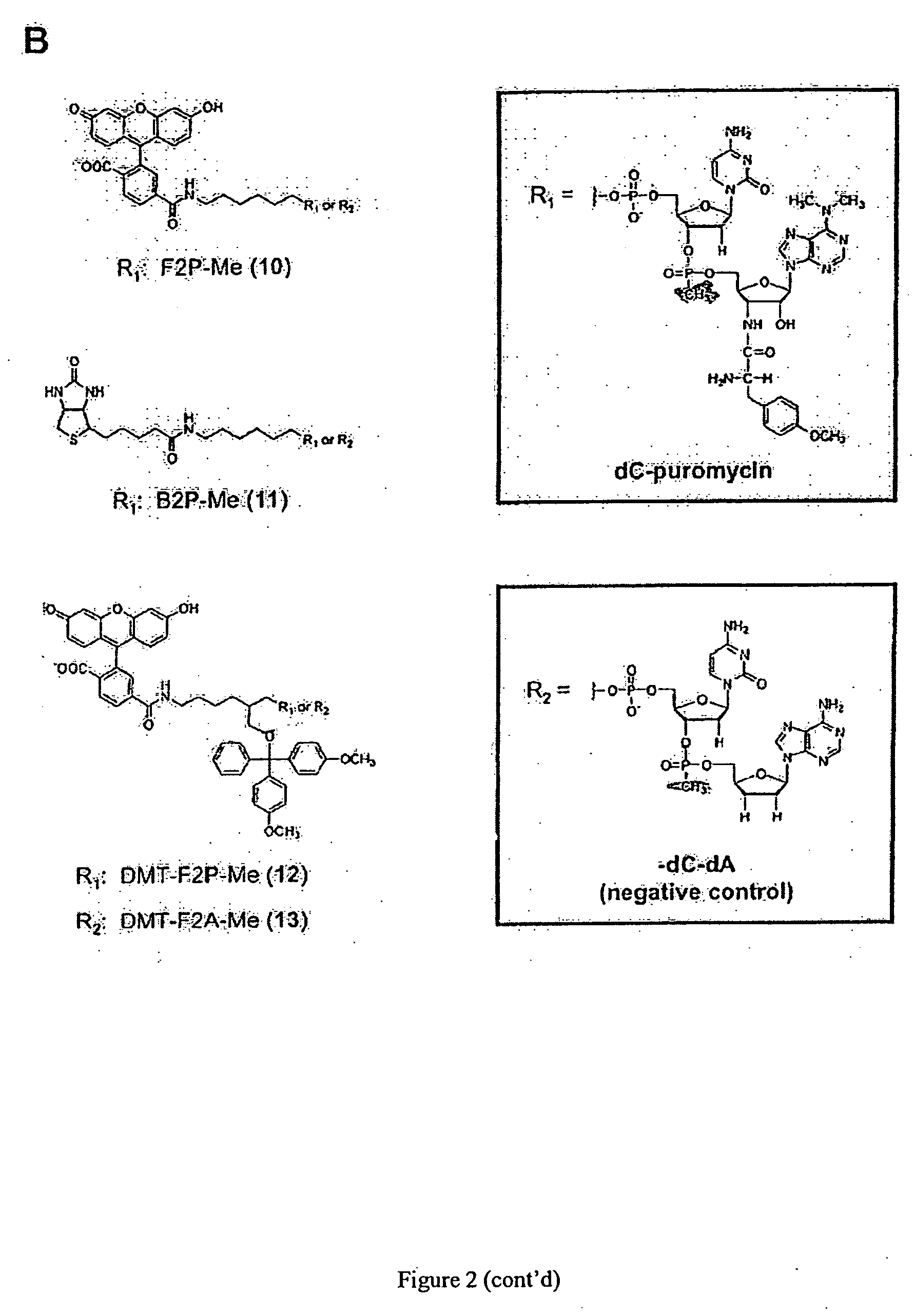Detection of protein expression in vivo using fluorescent puromycin conjugates
a technology of fluorescent puromycin and protein expression, applied in the field of labeling proteins, can solve the problems of inundating the protein synthesis machinery with non-native transcripts, unable to directly monitor the level of protein synthesis, and limited use of gfp-based constructs
- Summary
- Abstract
- Description
- Claims
- Application Information
AI Technical Summary
Benefits of technology
Problems solved by technology
Method used
Image
Examples
example 1
Experimental Procedures / Materials
[0070] L-Puromycin hydrochloride, rabbit globin mRNA, and carboxypeptidase Y (CPY) were obtained from Sigma Chemical Co. (St. Louis, Mo.). Rabbit reticulocyte Red Nova® lysate was purchased from Novagen (Madison, Wis.). L-[35S]methionine ([35S]Met) (1175 Ci / mmol) was obtained from NEN Life Science Products (Boston, Mass.). Immunopure® immobilized Neutravidin-agarose was from Pierce (Rockford, Ill.). GF / A glass microfiber filters were from Whatman.
Puromycin Conjugates
[0071] Puromycin conjugates were synthesized using standard phosphoramidite chemistry at the California Institute of Technology oligonucleotide synthesis facility. Puromycin-CPG was obtained from Glen Research (Sterling, Va.). Oligonucleotides were synthesized with the 5′-trityl intact, desalted via OPC cartridge chromatography (Glen Research) (DNA oligonucleotides only), cleaved, and evaporated to dryness. 5′-Biotin phosphoramidite, Biotin phosphoramidite, 5′-Fluorescein phosphoramid...
example 2
Design of Puromycin Conjugates
[0078] To label newly synthesized proteins, puromycin conjugates would have to satisfy three general criteria: 1) functionality in peptide bond formation, 2) cell permeability, and 3) ready detection in a cellular or biochemical context. In addressing the first issue, it had been previously shown that puromycin derivatives bearing substitutions directly off the 5′ OH functioned poorly in vitro (e.g., biotin-puromycin IC50=54 μM) [14], whereas conjugates with the general form X-dC-puromycin (e.g., biotin-dC-puromycin) were substantially more effective (IC50=11 μM) [14]. Therefore, a molecule design was determined by varying the substituents appended to dC-puromycin (FIG. 2A).
[0079] In order to facilitate cellular entry and detection, a number of factors were considered including: 1) type and position of the label, 2) the linker between the label and dC-puromycin, 3) background fluorescence properties, and 4) membrane permeability including net charge a...
example 3
Analysis of Puromycin-Conjugate Activity In Vitro
[0081] Initial analysis began by examining the activity of each of the conjugates in vitro for their ability to inhibit protein translation. Previously, this activity assay had been used to measure the IC50 for various puromycin conjugates [14] and analogues [18], as well as demonstrate a direct relationship between the IC50 and the efficiency of protein labeling [14]. Using this approach, IC50 values were measured for the compounds in FIGS. 2A and 2B (FIG. 3A). High resolution SDS-tricine gel data corresponding to a typical IC50 determination is shown for Cy52P (1) and Cy52A (2) (FIG. 3B). Generally, the activity of conjugates with the form X-dC-puromycin falls over a fairly narrow range in vitro, with IC50 values ranging from ˜4 to ˜30 μM (Table 1). Also, control conjugates that lack the amino acid moiety, e.g., Cy52A (2) and BF2A (9), show little ability to inhibit protein synthesis even at high concentrations.
[0082] Confirmation...
PUM
| Property | Measurement | Unit |
|---|---|---|
| Molar density | aaaaa | aaaaa |
| Fluorescence | aaaaa | aaaaa |
| Resolution enthalpy | aaaaa | aaaaa |
Abstract
Description
Claims
Application Information
 Login to View More
Login to View More - R&D
- Intellectual Property
- Life Sciences
- Materials
- Tech Scout
- Unparalleled Data Quality
- Higher Quality Content
- 60% Fewer Hallucinations
Browse by: Latest US Patents, China's latest patents, Technical Efficacy Thesaurus, Application Domain, Technology Topic, Popular Technical Reports.
© 2025 PatSnap. All rights reserved.Legal|Privacy policy|Modern Slavery Act Transparency Statement|Sitemap|About US| Contact US: help@patsnap.com



